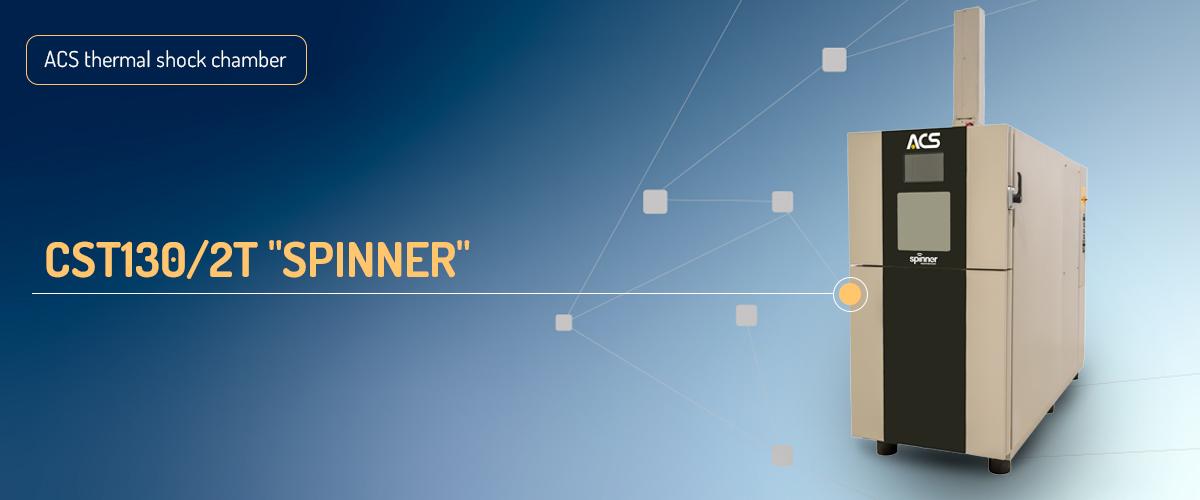
CST130/2T "spinner"- 2024 NEW version
Since June 2024 we have been offering to our clients the enhanced version of our thermal shock chamber CST130/2T “spinner” model.
Traditionally the CST130/2T “spinner” vertical thermal shock test chamber is made up of two test chambers placed one on top of the other: a hot chamber above and a cold chamber below.
The machine takes its name from the “spinner”, the mechanism that moves the basket from one chamber to the other. The basket, which holds the products to be tested, is moved electrically by means of a motorized worm drive that ensures a fast transfer speed and significantly reduced vibrations.
Since the first launch of the market in 2018 the “spinner” had a huge success thanks to its great and innovative features:
- Electronic control of the ON/OFF solenoid valves makes it possible to optimize the operation of the cooling system according to the machine’s working conditions
- Compressed air drying columns to improve chamber performance in terms of productivity, for long-term tests without the need to use defrosting cycles
- The new CST130/2T “spinner” allows you to add a preconditioning and postconditioning stage to the test cycle:
- Preconditioning allows the obtaining of cycles that are closer to the thermal profile set in the first stage;
- Postconditioning allows the specimen to be moved more rapidly at the end of the cycle. To speed up the cooling of the hot chamber, it is equipped with a compressed-air flushing system
- Internal design conceived to obtain an ideal air flow optimized for the most demanding standards, such as the MIL-STD-883H METHOD 1010.8
Today, to meet and exceed the customers highest expectations, we have enhanced our product features.
The tools we used to achieve this goal were:
- Voice of the Customer (VOC) Analysis: collect and prioritize customer needs through direct feedback and segmentation to understand different customer profiles and their specific requirements.
- Quality Function Deployment (QFD): convert the voices of customers (VOC) into technical requirements and priorities, ensuring the product meets customer expectations and addresses their needs effectively.
- Inventive Problem Solving Methodology (TRIZ): apply TRIZ to identify and solve contradictions or trade-offs in product features, which stimulates innovative solutions and improvements.
Thanks to this careful analysis we have been able to realize a product offering new features and improved performances. It has an extended temperature range, minimal temperature fluctuation, and enhanced temperature rate of change. Additionally, it can handle a higher load with MIL 883 test.

- High efficiency and versatility are achieved thanks to programmable hot chamber and cold chambers temperature offsets.
- The cold chamber temperature extends up to +180°C, allowing for thermostatic profiles similar to a classic temperature chamber!
- Preconditioning and postconditioning functions are included, with the possibility to open the door (hot chamber) while keeping the cold chamber conditioning.
The chamber boasts a 130-liter basket capacity, with usable dimensions of 475x650x385 mm (LxWxH) and a maximum load of 50 kg. The temperature range, measured at an ambient temperature of 22°C, empty workspace, and nominal voltage, varies from +70 to +220°C for the upper chamber and from -80 to +180°C for the lower chamber.
To recap the main features of the new CST130/2T “spinner”:
- Increased heating and cooling performances
- Improved functionalities
- Reduced Impact on the Test Lab thanks to:
- Smaller footprint and weight
- Reduced noise level
- Reduced energy consumption at the same performances